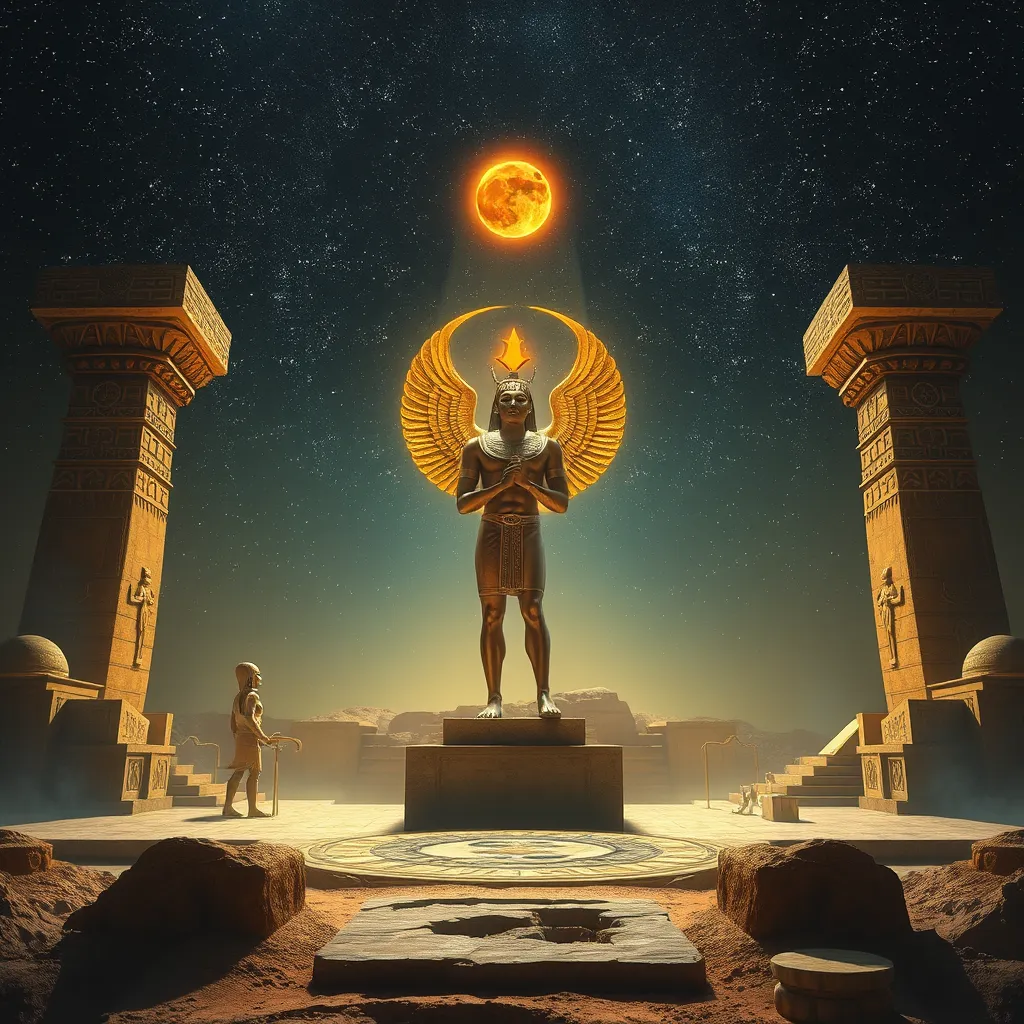The Myth of Creation: The Role of Atum, Ra, and Other Gods in Shaping the Universe
I. Introduction
Creation myths are integral to the cultural fabric of ancient civilizations, offering insights into how different societies understood the origins of the universe and their place within it. Among these, Egyptian mythology stands out for its rich narrative and complex pantheon of gods, each contributing uniquely to the cosmic order.
This article aims to explore the significant roles of key deities such as Atum and Ra, alongside others, in the ancient Egyptian understanding of creation. By delving into their stories and attributes, we can gain a deeper appreciation of how these myths shaped the worldview of ancient Egyptians.
II. The Concept of Creation in Ancient Egyptian Cosmology
In ancient Egyptian belief, the cosmos was perceived as a vast and intricate system governed by divine forces. The concept of creation was not merely a singular event but rather an ongoing process that involved the interplay of chaos and order.
- Chaos (Nun): Representing the primordial waters, Nun symbolizes the formless void preceding creation.
- Order (Ma’at): In contrast, Ma’at embodies truth, balance, and cosmic order, establishing harmony in the universe.
Various creation myths exist within Egyptian mythology, each offering a unique perspective on how the universe came into being. These myths often reflect the cultural and regional variations within ancient Egypt.
III. Atum: The Primordial God of Creation
Atum is revered as the primordial god of creation in Egyptian mythology. He is often depicted as a man with a double crown, symbolizing his rule over Upper and Lower Egypt.
According to myth, Atum emerged from the primordial waters of Nun and took it upon himself to create the first gods, including Shu (air) and Tefnut (moisture). This act of creation set into motion the order of the cosmos.
The symbolism of Atum is profound; he represents the cyclical nature of creation and destruction, embodying the idea that from chaos, order can arise. His role as the creator underscores the belief that life and existence are interconnected and constantly evolving.
IV. Ra: The Sun God and His Role in Creation
Ra, the sun god, holds a paramount position in Egyptian mythology. As the embodiment of the sun, he represents life, light, and the cyclical nature of existence. Ra’s journey across the sky symbolizes the daily cycle of birth and renewal.
Ra’s significance extends beyond mere solar representation; he is often seen as a creator god who brings forth life and sustains the universe. He is associated with the concept of time and the orderly progression of day and night.
Furthermore, Ra’s relationships with other gods, such as Osiris and Isis, illustrate his role in the maintenance of cosmic order. He is frequently depicted navigating the underworld at night, ensuring the balance between life and death.
V. The Ennead: The Group of Nine Deities
The Ennead is a group of nine deities worshipped primarily in Heliopolis, representing a comprehensive pantheon integral to the creation myth. The Ennead consists of:
- Atum
- Shu
- Tefnut
- Geb
- Nut
- Osiris
- Isis
- Seth
- Nephthys
Each deity within the Ennead plays a specific role in the creation narrative. For example, Shu and Tefnut represent air and moisture, while Geb (the earth) and Nut (the sky) illustrate the separation of order from chaos.
The interplay between these gods is crucial in shaping the universe, demonstrating how collaboration among deities fosters balance and harmony.
VI. The Role of Other Deities in Creation and Cosmic Order
In addition to Atum and Ra, other deities such as Osiris, Isis, and Horus significantly contribute to the themes of creation and cosmic order.
- Osiris: The god of the afterlife, he symbolizes resurrection and regeneration, reinforcing the cyclical nature of existence.
- Isis: A goddess of magic and motherhood, her protective qualities and nurturing nature emphasize the importance of fertility and rebirth.
- Horus: Often considered the sky god, he represents kingship and protection, further contributing to the stability of the universe.
These deities exemplify the balance of chaos and order maintained in Egyptian cosmology, with myths often illustrating their collaborative efforts in creation.
VII. Symbolism and Themes in Egyptian Creation Myths
Egyptian creation myths are rich in symbolism and themes that resonate with human experience. Two prominent themes include:
- Light and Darkness: The emergence of light from darkness signifies the birth of creation and the establishment of order.
- Fertility, Death, and Rebirth: The cycles of nature, such as the flooding of the Nile, reflect the themes of life, death, and renewal, mirroring human existence.
These narratives serve as metaphors for the human condition, providing insights into the struggles and triumphs of life, while also emphasizing the interconnectedness of all beings.
VIII. Conclusion
In summary, the roles of Atum, Ra, and other deities in ancient Egyptian mythology illustrate a complex understanding of the universe’s creation. Through their narratives, we see the balance of chaos and order, the cyclical nature of life, and the importance of collaboration among the gods.
The enduring legacy of these creation myths continues to influence contemporary culture, reminding us of the fundamental questions regarding existence and our place in the cosmos. By studying these myths, we gain valuable insights into the human experience and the timeless search for understanding.





